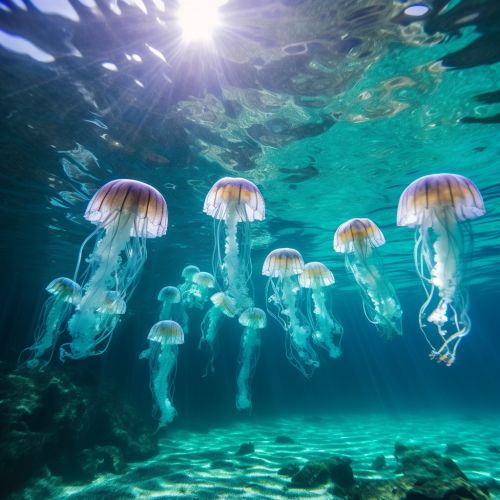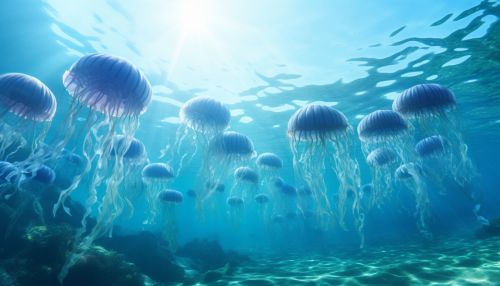Jellyfish Blooms and Marine Ecosystems
Overview
Jellyfish are marine invertebrates belonging to the class Scyphozoa within the phylum Cnidaria. They are characterized by their gelatinous bodies and long, stinging tentacles. In recent years, there has been a significant increase in the frequency and magnitude of jellyfish blooms, which are large, temporary increases in the population of jellyfish. These blooms have been observed in oceans worldwide and have significant implications for marine ecosystems.
Jellyfish Blooms
Jellyfish blooms are a natural phenomenon that occur when environmental conditions favor the rapid reproduction and growth of jellyfish. These conditions can include increased water temperature, decreased salinity, and an abundance of food sources. Blooms can consist of hundreds to millions of jellyfish and can cover areas ranging from a few square meters to several square kilometers.


Causes of Jellyfish Blooms
There are several factors that contribute to the occurrence of jellyfish blooms. These include:
Climate Change
Climate change is believed to be a significant factor in the increase of jellyfish blooms. Rising sea temperatures create ideal conditions for jellyfish reproduction and growth, leading to larger and more frequent blooms.
Overfishing
Overfishing can also contribute to jellyfish blooms. By removing large numbers of fish from the ocean, overfishing disrupts the balance of marine ecosystems and allows jellyfish populations to increase.
Eutrophication
Eutrophication, the process by which a body of water becomes overly enriched with nutrients, can also lead to jellyfish blooms. Excessive nutrients in the water can lead to algal blooms, which in turn deplete oxygen levels and create conditions favorable for jellyfish.
Impact on Marine Ecosystems
Jellyfish blooms can have a significant impact on marine ecosystems. They can disrupt the food chain, deplete resources, and cause damage to fishing gear and infrastructure.
Disruption of Food Chains
Jellyfish are voracious predators and can consume large quantities of zooplankton, fish eggs, and small fish. During a bloom, jellyfish can deplete these resources, disrupting the food chain and impacting other marine species.
Depletion of Resources
Jellyfish blooms can also deplete resources in the marine environment. They consume large quantities of plankton, reducing the availability of this important food source for other marine species.
Damage to Fishing Gear and Infrastructure
Large jellyfish blooms can cause significant damage to fishing gear and infrastructure. They can clog nets and cause them to sink, resulting in economic losses for the fishing industry.
Management and Mitigation
Efforts to manage and mitigate the impacts of jellyfish blooms are ongoing. These include monitoring and predicting blooms, developing jellyfish-resistant fishing gear, and exploring uses for jellyfish in food and medicine.
